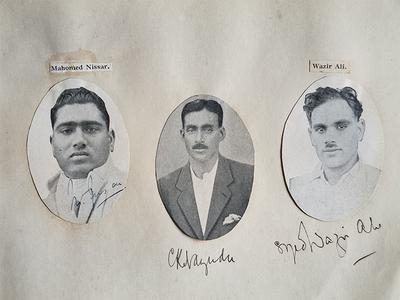Cricket Legends of Colonial India: The Mangaldas Family Autograph Book
Among the many treasures preserved in the Sir Mangaldas Nathubhai family collection is a slim, timeworn album belonging to his great-granddaughter Meenal. Its pages, still intact after a century, neatly inscribed with signatures and photographs, carry the imprints of cricketing legends from the early decades of the twentieth century.
Read More














